 December 3, 2020 John E. Ross, KD8IDJ, Editor
| ||||||
ARRL Announces Director, Vice Director, Section Manager Election Results The ARRL Dakota Division will have a new Director, and the Great Lakes and Midwest Divisions will have new Vice Directors on January 1. The results of four contested elections for Director and Vice Director in three ARRL Divisions were announced on November 20, after ballots were tallied at ARRL Headquarters. In the Dakota Division, incumbent Matt Holden, K0BBC, lost his re-
election bid to challenger Vernon "Bill" Lippert, AC0W. The vote was 982 to 485. Holden had served as Director since 2018. In the Great Lakes Division, incumbent Director Dale Williams, WA8EFK, retained his seat in a challenge from Michael Kalter, W8CI. The vote was 1,840 to 1,398. In a three-way contest for Great Lakes Division Vice Director, Ohio Section Manager Scott Yonally, N8SY, received 1,670 votes to outpoll Jim Hessler, K8JH, with 975 votes, and Frank Piper, KI8GW, who received 611 votes. Incumbent Vice Director Tom Delaney, W8WTD, did not run for another term. In the Midwest Division, Dave Propper, K2DP, will become the new Vice Director in January. He received 1,164 votes to 623 votes for challenger Lloyd Colston, KC5FM. Declared Elected without Opposition In the Atlantic Division, Director Tom Abernethy, W3TOM, who has held the seat since 2015, and Vice Director Bob Famiglio, K3RF, elected to a 3-year term (2015 - 2018) and then appointed in 2019 to fill a vacancy when the incumbent stepped down.
All newly elected officials take office at noon on January 1, 2021. New York City-Long Island Section Manager Re-Elected New York City-Long Island Section Manager Jim Mezey, W2KFV, has been re-elected in the fall election cycle. Mezey, of Carle Place, received 527 votes to 136 for challenger Donnie Katzovicz, W2BRU. In the West Central Florida (WCF) Section, Michael Douglas, W4MDD, of Wauchula, Florida, will become Section Manager starting on January 1, 2021. He was the only nominee for the post. Douglas is currently Affiliated Club Coordinator, a Technical Specialist, and an Official Emergency Station. Incumbent WCF Section Manager Darrell Davis, KT4WX, did not run for a new term after serving for the past 6 years. These incumbent Section Managers were the only candidates for re-election and will begin new terms of office on January 1: Tom Walsh, K1TW (Eastern Massachusetts); Cecil Higgins, AC0HA (Missouri); Matt Anderson, KA0BOJ (Nebraska); Thomas Dick, KF2GC (Northern New York); Marc Tarplee, N4UFP (South Carolina); Tom Preiser, N2XW (Southern New Jersey), and Joe Shupienis, W3BC (Western Pennsylvania). ARRL Asks FCC to Allow 3.4-GHz Operation until Spectrum is Occupied In comments to the FCC, ARRL has argued that radio amateurs be allowed to continue shared operation in the 3.4 GHz band until 5G licensees who purchase the spectrum when the FCC puts it up for auction initiate incompatible operations. In its Further Notice of Proposed Rulemaking (FNPRM) in WT Docket 19-348, the FCC had proposed to sunset the band for amateur radio in two phases, governed by when new licenses are issued rather than when the new licensees begin to use the spectrum. In the FNPRM, the FCC solicited comments on whether alternatives exist to its proposal. "Amateur activities further the public interest and should be permitted to continue on a secondary basis unless and until a new primary "Amateurs often select the 3.4-GHz spectrum precisely because other spectrum choices are sub-optimum or simply not available. Amateurs also are only secondary users on most of the other spectrum suitable for similar purposes," ARRL said. "Links must be carefully engineered because of that secondary status, which applies to most of the 2.4- and all of the 5.8-GHz bands available to amateurs. ARRL emphasized the importance of allowing amateurs to continue to use the 3.4 - 3.45 GHz portion in particular. ARRL pointed out that in many geographic areas it could be years before the 3 GHz spectrum is actually put into use by commercial users, and argued that amateur radio should be allowed to continue to operations on a secondary, non-interference basis as it has done for decades with federal primary users, until new uses actually begin, rather than when licenses are issued. Read more. ARRL Learning Network Webinars Visit the ARRL Learning Network web page to register for upcoming sessions and to view previously recorded session. The schedule is subject to change. Amateur Radio's Role at the Boston Marathon Bombing: Steve Schwarm, W3EVE
Tuesday, December 8, 2020, 10 AM PST / 1 PM EST (1800 UTC) Learn and Have Fun with Morse Code: Howard Bernstein, WB2UZE, and Jim Crites, W6JIM Morse code or "CW" is a popular ham radio operating mode. Learning CW does not have to be an arduous or lonely experience. Learn, practice, and enjoy CW with the methods used by the Long Island CW Club. Thursday, December 17, 2020, 5 PM PST / 8 PM EST (0100 UTC on Friday, December 18) QSLing in an Online World: Anthony Luscre, K8ZT Learn all about the changing methods of QSLing in Amateur Radio, including traditional paper QSL cards, and electronic QSLing, such as Logbook of The World and eQSL. Tuesday, January 5, 2021, 10 AM PST / 1 PM EST (1800 UTC) December is YOTA Month The month of December has been designated as YOTA month. The annual initiative sponsored by Youngsters On The Air (YOTA) initially focused on International Amateur Radio Union (IARU) Region 1 YOTA (Youth on the Air) in Region 2 (the Americas) is following step, and K8Y, K8O, K8T, and K8A will be on the air from the US. The overarching idea is to demonstrate amateur radio to youth to encourage them to get licensed and for younger radio amateurs to get active. YOTA-suffix stations have been on the air from the annual summer camp and other subregional camps in Region 1, but the COVID-19 pandemic sidelined those gatherings in 2020. All radio amateurs can support this effort by contacting participating stations. An awards program is available. During YOTA month 2019, 47 participating YOTA stations racked up nearly 130,000 contacts. Follow YOTA via Twitter: @hamyota and @hamyota_official. All young radio amateurs (up to age 26) are encouraged to participate. Direct questions via email to info@ham-yota.com. Arecibo Observatory Suffers a Fatal Blow as Instrument Platform Falls The 900-ton instrument platform of the 305-meter radio telescope at Arecibo Observatory in Puerto Rico fell some 400 feet Tuesday morning, crashing into the huge, already-damaged dish below, the National Science Foundation (NSF) reported in a December 1 Tweet. "No injuries were reported," NSF said, adding that it is still assessing the situation. "Our top priority is maintaining safety." The calamity not only was a final and fatal blow for the observatory but for the people of Puerto Rico.
Head of Telescope Operations Angel Vazquez, WP3R, called December 1 "indeed a sad day." Vazquez was in the Observatory's control room at the time, salvaging important instruments when he heard a loud noise. "At around 7:55 AM, the platform collapsed due to the extra stress on the existing cables because of the main cable failure in November. Strands were starting to pop all weekend long, and it was just a matter of time," he told ARRL. "It came off the easternmost tower (T4) and took about 15 seconds. The azimuth arm that housed the dome came off the track, fell into the dish a little north of center and the triangle was pulled by the other existing cables to the northwestern part of the dish. The tops of the towers broke as well. This was a 900-ton platform, and the dome was smashed like an eggshell." Vazquez said the Observatory still has a 12-meter dish that will be used for radio astronomy, as well as a LIDAR Lab and an Optical Lab with photometers. "The site by no means is closed and it wasn't the intent of NSF to close the facility, he said. "They did want us to stabilize the platform, so it could be lowered safely. We are looking into rebuild possibilities." On August 10, an auxiliary cable that helped to support the platform snapped and fell, causing a 100-foot gash in the reflector dish. After an extensive evaluation, NSF announced on November 19 that the damaged radio telescope -- in service for nearly 60 years -- was beyond repair and would be decommissioned due to safety concerns. The iconic dish has served as a backdrop for several science fiction movies. The Arecibo Observatory Amateur Radio Club, KP4AO, is headquartered at the Observatory, and several other radio amateurs are employed there in addition to Vazquez. Read more. Announcements
FCC to Require Email Addresses on Applications Amateur radio licensees and candidates will have to provide the FCC with an email address on applications, effective in mid-2021. If no email address is included, the FCC may dismiss the application as defective. The FCC is fully transitioning to electronic correspondence and will no longer print or provide wireless licensees with hard-copy authorizations or registrations by mail. A Report and Order (R&O) on "Completing the Transition to Electronic Filing, Licenses and Authorizations, and Correspondence in the Wireless Radio Services" in WT Docket 19-212 was adopted on September 16. The new rules will go into effect 6 months after publication in the Federal Register, which hasn't happened yet, but the FCC is already strongly Under Section 97.21 of the new rules, a person holding a valid amateur station license "must apply to the FCC for a modification of the license grant as necessary to show the correct mailing and email address, licensee name, club name, license trustee name, or license custodian name." For a club or military recreation station license, the application must be presented in document form to a club station call sign administrator who must submit the information to the FCC in an electronic batch file. Under new Section 97.23, each license will have to show the grantee's correct name, mailing address, and email address. "The email address must be an address where the grantee can receive electronic correspondence," the amended rule will state. "Revocation of the station license or suspension of the operator license may result when correspondence from the FCC is returned as undeliverable because the grantee failed to provide the correct email address." WX1AW and WX4NHC will be On the Air for SKYWARN Recognition Day 2020 The annual SKYWARN⢠Recognition Day (SRD) takes place on Saturday, December 5, 0000 - 2400 UTC. Cosponsored by ARRL and the National Weather Service (NWS), SRD recognizes radio amateurs for the vital public service they provide during severe weather. Amateur radio operators comprise a large percentage of SKYWARN volunteers.
WX1AW will be on the air for SRD 2020. Volunteers from the ARRL staff will take part from their home stations as WX1AW/portable. WX1AW will be available on various HF frequencies and modes. As it has done in the past, WX4NHC at the National Hurricane Center (NHC) will be on the air for SRD, marking its 22nd year of participation and its 40th year of public service at the NHC. A SKYWARN Recognition Day Facebook page has been created and will host a variety of live and recorded segments throughout the day. An SRD resource page is on the ARRL website. Yasme Foundation Announces Excellence Awards The Yasme Foundation has announced the latest recipients of the Yasme Excellence Award. They are Brett Ruiz, PJ2BR, and Helena Ruiz, PJ2ZZ; Bob Wilson, N6TV; Jari Perkiömäki, OH6BG, and Jim Brown, K9YC. The Yasme Excellence Award recognizes individuals and groups who, through their own service, creativity, effort, and Brett and Helena Ruiz have been active leaders of the VERONA Radio Club, Curaçao's International Amateur Radio Union (IARU) member-society, for more than 20 years. Their participation has included technical activities, disaster preparedness and relief, and training of potential radio amateurs. They serve as liaisons to government and international organizations, and contribute to important events, such as the Global Amateur Radio Emergency Communications Conference (GAREC) and IARU conferences and meetings. Brett Ruiz is also active in long-distance VHF propagation and digital communication. Yasme recognized Bob Wilson, N6TV, for his technical support to hundreds of hams through various radio manufacturers' user groups and logging software communities, and for assistance to Reverse Beacon Network (RBN) hosts in keeping their equipment configured and running. He also provides invaluable support to traveling hams worldwide. "Along with being technically talented, he is exceptionally selfless in using that talent to help others; quick to encourage others in many areas," the Yasme Foundation said in announcing the awards. Jari Perkiömäki, OH6BG, has volunteered to support the online VOACAP software and website for nearly 20 years, making world-class HF propagation prediction and modeling services available to any radio amateur. "He believes in teamwork, acknowledging the contributions and ideas from the ham community for further development of the service, but especially from James Watson, M0DNS/HZ1JW, and Juho Juopperi, OH8GLV," Yasme said. Perkiömäki estimates that VOACAP online serves thousands of users from more than 100 countries every month, including integration with the DX Summit and Club Log services. Jim Brown, K9YC, was cited for his extensive contribution to amateur radio regarding ferrite materials and their use in combating RF interference, feed-line applications, and transformers. "His efforts to improve transmitter performance and operating practices are also greatly appreciated, as are the extensive set of personal publications available to the public and performing reviews of technical material for amateur radio publishers," Yasme said. Read more. The K7RA Solar Update Tad Cook, K7RA, Seattle, reports: Sunspot Cycle 25 is a year old, and solar activity continues to increase. Last week, the average daily sunspot number was 27.9. This week it's 57.6. The highest daily sunspot number of the past week was 84 on November 29. Solar flux also peaked that day at 116.3, pushing the week's average to 108.1, up from 90.1 the previous week. Geomagnetic indicators were moderate. A solar flare on November 29 was the most powerful solar flare and coronal mass ejection (CME) in the new solar cycle -- a sure sign of increasing activity. It was not Earth-directed, however.
Planetary A index is predicted at 5 on December 3 - 17; 12, 20, and 8 on December 18 - 20; 5 on December 21 - 22; 8, 10, and 8 on December 23 - 25; 5 on December 26 - January 13, and 12, 20, and 8 on January 14 - 16. Sunspot numbers for November 26 - December 2 were 43, 60, 67, 84, 62, 46, and 41, with a mean of 57.6. The 10.7-centimeter flux was 105.8, 106.3, 109.6, 116.3, 109.4, 104.1, and 104.9, with a mean of 108.1. Estimated planetary A indices were 7, 8, 10, 6, 8, 2, and 4, with a mean of 6.4. Middle latitude A index was 5, 7, 9, 6, 6, 2, and 4, with a mean of 5.6. A comprehensive K7RA Solar Update is posted Fridays on the ARRL website. For more information concerning radio propagation, visit the ARRL Technical Information Service, read "What the Numbers Mean...," and check out K9LA's Propagation Page. A propagation bulletin archive is available. For customizable propagation charts, visit the VOACAP Online for Ham Radio website. Share your reports and observations. In Brief...
Just Ahead in Radiosport
Upcoming ARRL Section, State, and Division Conventions Note: Many conventions and hamfests have been canceled or postponed due to the coronavirus pandemic. Check the calendar of canceled events on the ARRL website.
Find conventions and hamfests in your area.
ARRL -- Your One-Stop Resource for . .
Subscribe to...
Free of charge to ARRL members...
| ||||||
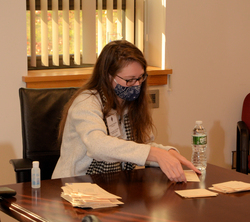
(1).jpg) The race for NYC-LI SM was the only contested election. Mezey begins a new 2-year term of office on January 1, 2021. He has served as New York City-Long Island Section Manager since 2013.
The race for NYC-LI SM was the only contested election. Mezey begins a new 2-year term of office on January 1, 2021. He has served as New York City-Long Island Section Manager since 2013..jpg) licensee is ready to occupy the spectrum in a preclusive manner," ARRL told the FCC. "At a minimum, amateur operations should be permitted to continue indefinitely in the 3.3 - 3.45 GHz spectrum, where no new flexible licenses are under immediate consideration. The Commission could consider whether a registration or other mechanism similar to that found in Section 97.303(g) would facilitate avoiding interference." Section 97.303(g) contains specific frequency-sharing requirements for the 2200- and 630-meter amateur bands.
licensee is ready to occupy the spectrum in a preclusive manner," ARRL told the FCC. "At a minimum, amateur operations should be permitted to continue indefinitely in the 3.3 - 3.45 GHz spectrum, where no new flexible licenses are under immediate consideration. The Commission could consider whether a registration or other mechanism similar to that found in Section 97.303(g) would facilitate avoiding interference." Section 97.303(g) contains specific frequency-sharing requirements for the 2200- and 630-meter amateur bands. Amateur radio has played a significant role in public service communications for the Boston Marathon for several decades. That role was put to the test in 2013 when two bombs were exploded near the finish line. This presentation will describe the role that ham radio played at the Marathon and how that role changed due to the bombing.
Amateur radio has played a significant role in public service communications for the Boston Marathon for several decades. That role was put to the test in 2013 when two bombs were exploded near the finish line. This presentation will describe the role that ham radio played at the Marathon and how that role changed due to the bombing.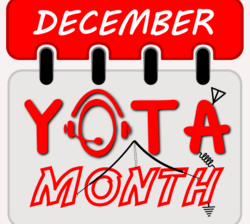 (Europe, the Mideast, and Africa), with young radio amateurs taking to the air with YOTA-suffix call signs.
(Europe, the Mideast, and Africa), with young radio amateurs taking to the air with YOTA-suffix call signs..jpg)
.jpg) FCC Chairman Ajit Pai has
FCC Chairman Ajit Pai has  An IEEE Spectrum magazine
An IEEE Spectrum magazine .png) encouraging applicants to provide an email address. When an email address is provided, licensees will receive an official electronic copy of their licenses when the application is granted.
encouraging applicants to provide an email address. When an email address is provided, licensees will receive an official electronic copy of their licenses when the application is granted.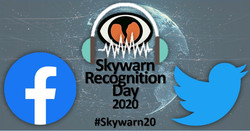 Begun in 1999, the event's purpose is to test amateur radio operations and equipment between NWS Offices nationwide, and it is open to all stations. Participants exchange signal reports and basic weather information (e.g., "sunny," "cloudy," "rain") with stations at NWS Offices and elsewhere. This year, due to COVID-19 restrictions, operation from NWS forecast offices is expected to be minimal, so the focus will shift to contacting as many participating trained SKYWARN spotters as possible.
Begun in 1999, the event's purpose is to test amateur radio operations and equipment between NWS Offices nationwide, and it is open to all stations. Participants exchange signal reports and basic weather information (e.g., "sunny," "cloudy," "rain") with stations at NWS Offices and elsewhere. This year, due to COVID-19 restrictions, operation from NWS forecast offices is expected to be minimal, so the focus will shift to contacting as many participating trained SKYWARN spotters as possible.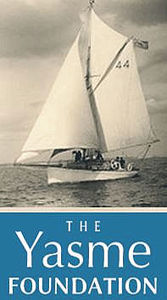 dedication, have made a significant contribution to amateur radio. This may be a technical, operating, or organizational achievement.
dedication, have made a significant contribution to amateur radio. This may be a technical, operating, or organizational achievement.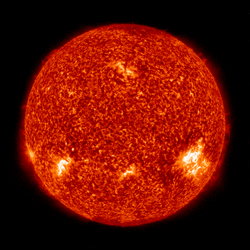 Predicted solar flux over the next 45 days is 105 on December 3 - 4; 103, 95, and 90 on December 5 - 7; 85 on December 8 - 9; 80 on December 10; 85 on December 11 - 12; 82 on December 13 - 16; 85, 90, and 100 on December 17 - 19; 105 on December 20 - 21; 108 on December 22; 110 on December 23 - 25; 115 on December 26 - 27; 113 on December 28 - 30; 110 on December 31; 105 and 103 on January 1 - 2; 95 on January 3 - 4; 92 and 88 on January 5 - 6; 85 on January 7 - 8; 82 on January 9 - 12, and 85, 90, 100 and 105 on January 13 - 16.
Predicted solar flux over the next 45 days is 105 on December 3 - 4; 103, 95, and 90 on December 5 - 7; 85 on December 8 - 9; 80 on December 10; 85 on December 11 - 12; 82 on December 13 - 16; 85, 90, and 100 on December 17 - 19; 105 on December 20 - 21; 108 on December 22; 110 on December 23 - 25; 115 on December 26 - 27; 113 on December 28 - 30; 110 on December 31; 105 and 103 on January 1 - 2; 95 on January 3 - 4; 92 and 88 on January 5 - 6; 85 on January 7 - 8; 82 on January 9 - 12, and 85, 90, 100 and 105 on January 13 - 16.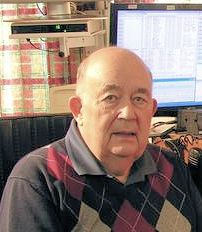 A new contest plaque has been announced for the
A new contest plaque has been announced for the  "The Gathering" will be the theme for the 2021
"The Gathering" will be the theme for the 2021 .jpg) RadioShack
RadioShack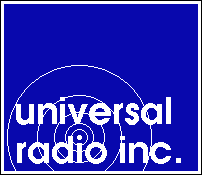 Universal Radio
Universal Radio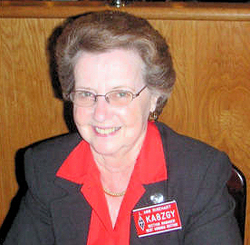 Former West Virginia Section Manager Ann Rinehart, KA8ZGY, of South Charleston died on November 20 of COVID-19 complications. An ARRL Member, she was 85. ARRL Roanoke Division Vice Director Bill Morine, N2COP, said, "She was one of our Division's pioneering women -- consistently gracious, yet firm in her efficient management of the Section." Rinehart served as West Virginia Section Manager from 2005 until 2013. Read
Former West Virginia Section Manager Ann Rinehart, KA8ZGY, of South Charleston died on November 20 of COVID-19 complications. An ARRL Member, she was 85. ARRL Roanoke Division Vice Director Bill Morine, N2COP, said, "She was one of our Division's pioneering women -- consistently gracious, yet firm in her efficient management of the Section." Rinehart served as West Virginia Section Manager from 2005 until 2013. Read .jpg)








